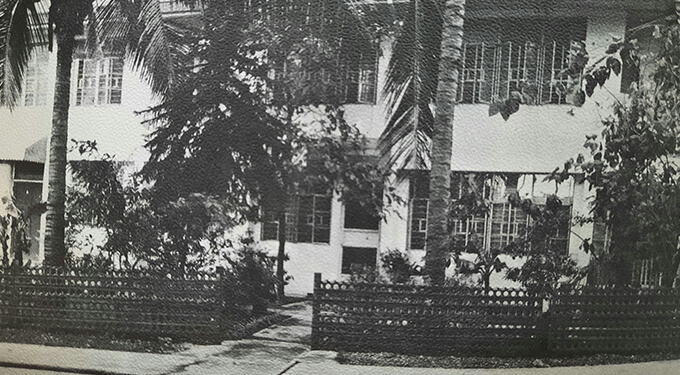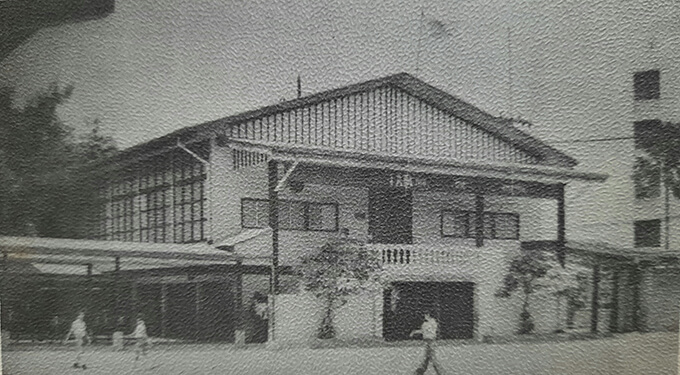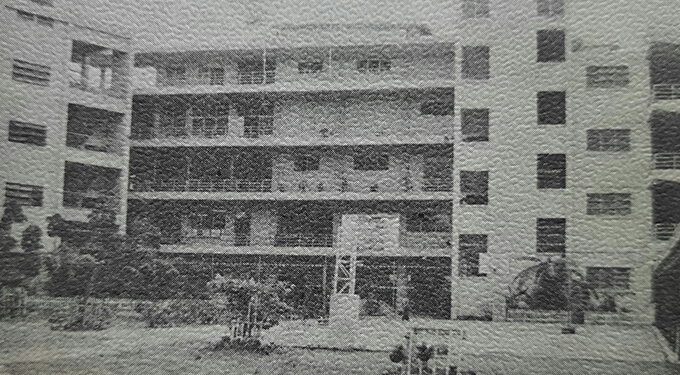Our History
Its story began in St. Stephen’s Church of Manila which was established in 1903 and run by the American Episcopal Mission in the Philippines headed by Bishop Charles Henry Brent.
In line with the church’s goal of providing a place of worship and guiding the Manila Chinese residents into becoming a Christian community, the idea of opening a night school for young men was first hatched and brought to fruition in 1905. It operated until 1909.
The Birth
Running a new school was not without the attendant challenges. Mrs. Studley, wife of the priest-in-charge in church and first principal of the school, braved the administrative demands of ensuring ample financial resources, suitable room provisions and a constant pool of teachers. It was said that “the only steady element seemed to be the girls who came surely and regularly.” Their number grew to 150 in 1921. At the first graduation exercises in 1922, eight girls received their diplomas.
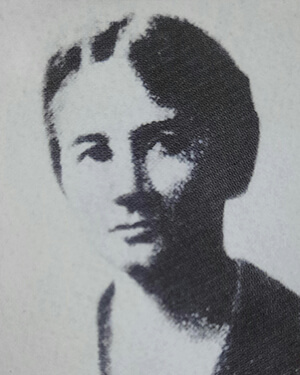
Mrs. Edith Studley |
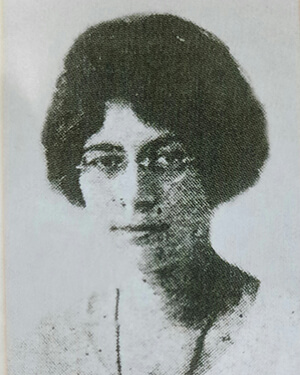
Miss Georgia Brown |
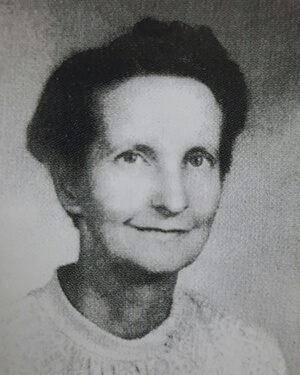
Mrs. Dorothy Latham Mattocks |
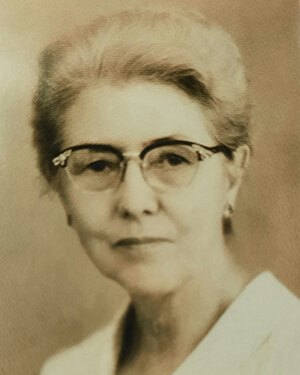
Miss Constance Bolderston |
As envisioned by the founders, the purpose of the school in educating the Chinese girls was to improve on their knowledge and intelligence; to bring them to church; and to prepare them in establishing Christian homes in the future, with Christian men as partners in marriage. Mrs. Studley was succeeded by Ms. Georgia Brown (1920), Ms. Dorothy Latham (later Mattocks; 1925) and Ms. Constance Bolderston (1932) in holding the reins of the principal’s office. All of them studied the Chinese language. Bishop Governeur Frank Mosher continued to recruit new English faculty, many of whom were missionaries, and some of whom, including pioneering kindergarten teacher Ms. Tan Jin Tek, “came out of troubled China.”
Early Growth
In a sea of lavender amidst a thriving and growing school populace, St. Stephen’s Chinese Girls’ School flourished. The elementary department became firmly established. As early as 1925, the English and Chinese high school departments began to be put in place. It was in 1921 that the lavender skirt and white top was adopted as the official school uniform in place of white dress. Lavender happened to be the favorite color of Mrs. Studley. The students gradually became active in church with some girls joining the choir and others helping in the Sunday School. Meanwhile, the school population reached 305 in 1927.
Physical Expansion
The growing needs of the school necessitated physical expansion. In 1939, the school finally moved to Calle Magdalena (now Masangkay) from its location in Reina Regente Street.
The property in Calle Magdalena had been bought in 1928 through the efforts of Bishop Mosher, Rev. Hobart Studley and Mr. S.C. Choy. It occupied the block next to the location of St. Luke’s Hospital, which was also run by the Episcopal Mission. The place was initially used as a playground where students had to be taken by the school bus for their P.E. classes only.
|
Library |
Dormitory |
Soon, a mission home and a 15-room building were put in place, along with a renovated row of dormitory units. The school put up a benefit program at the Rizal Stadium in 1941 to raise more funds to help cover the cost of new construction. Next to rise was a new building on the La Torre side intended to house a library, dormitory and new classrooms. This building was completed in December 1941.
Disrupted by War
It was then that tragedy struck. Japanese forces invaded the Philippines upon the outbreak of the Pacific War. On December 8, 1941, the school operations came to an abrupt halt.
The school compound was eventually sealed off by the Japanese military and the mission house was turned over to a Japanese doctor-director of St. Luke’s Hospital. The occupants were forced to move out and the rooms were used for Japanese civilian patients.
The Americans and British among the school staff became prisoners of war and were interned at the University of Sto. Tomas compound. The yet un-utilized new building was demolished and its fresh materials and equipment taken. The mission house was later taken over by Chinese guerilla units and used as headquarters during liberation.
Post-War Rebuilding
After the war, a period of healing ensued. The challenge to recover, rebuild and reorganize required much dedication. Government-required incorporation and recognition papers were reconstructed and re-filed. School reopened in December 1945, through the determined efforts of the teachers and staff who worked under the direction of Mrs. Huang Ong Bi Gim.
|
Mrs. Nancy L. Yao |
The first full-term school year since the 1941 disruption opened in July 1946, remarkably with 500 children. Their number quickly grew to 900. Many other schools had remained closed and accommodations for the enrollment of girls and boys, unschooled for almost five years, became the St. Stephen’s Girls’ School’s service to the community and contribution to nation-building .Mrs. Nancy L. Yao took on the role of principal in 1946 and Ms. Constance Bolderston was the directress.
In the words of the 1947 yearbook celebrating the 30th anniversary, the school community came together to offer prayers of thanks and praise to God for the divine blessing of surviving the war that had brought so much devastation.
|
Assembly Hall |
Rebuilding soon followed. The 600-seat assembly hall with classrooms and an open play court was completed in 1949, on the site previously occupied by the Japanese-demolished structure. A basketball court and covered walks were next built. Then, a four-classroom annex was put up fronting Magdalena Street.
By then, the school had officially been renamed St. Stephen’s High School. This development relieved the young male students of the perceived stigma and embarrassment of belonging to a so-called girls’ school. The school resumed its normal activities and was back on track in no time. In 1952, the first English High School graduating class members received their diplomas.
Growth and Expansion Continued
In 1954, the school’s Board of Trustees formally accepted Bishop Norman Binsted’s offer of the St. Luke’s Hospital Magdalena compound for use by the school. When the hospital finally moved in 1959 to its present site in Cathedral Heights, Quezon City, the old hospital building was demolished and the high school department started holding classes in the remodeled nurses’ home and pavilion.
By 1955, the school had received two generous donations from the Episcopal Church in the United States intended for construction of a new high school building. The Philippine government in 1956 required all Chinese schools to register their Chinese classes and integrate them in their English program. In 1960, the English high school graduation class ranked in the top ten percent of all the nation’s high school seniors after a national government examination.
A milestone was the construction of a new five-storey high school building completed and dedicated in 1963. It housed an 1100-seat auditorium. The high school Drama Club began staging successful musical productions such as The King and I and South Pacific and plays like Cyrano de Bergerac before jam-packed audiences.
During this time, the Christian Center prospered with the students being given opportunities to be active members of organizations such as the Girls’ Friendly Society, the Boy Scouts, the Acolytes, the Altar Guild, and the Glee Club. By then, enrollment had reached 2,500 and grew to 3,400 in 1967.
|
Panoramic-View-of-H.S.-Bldg |
The Ching Siok Giok Memorial Gymnasium was built in the high school lot in 1968 and a three-storey elementary school building was completed in 1969. Also, the director’s quarters in the elementary campus was converted and took in the school’s first Nursery class in 1971. The Student Council Organization (SCO) continued to be a fertile training ground for student leaders from the cream of the crop as elected by the student body. In the same year, it successfully launched the first-ever campus mini-fair called Freut ’71. It combined both the festive carnival atmosphere with the excitement of the different track and field events during the fair. Vying for top individual and team honors were the athletes of the Freshmen, Sophomores, Juniors and Seniors, who proudly carried their distinct batch colors of green, yellow, blue and red. When Martial Law was declared in 1972, the SCO was renamed CSA or Committee of Student Activities.
Ms. Bolderston retired as Directress in 1968 and was succeeded by Dr. Howard Collins (1968), Mr. Ty Huy Guan (1970), and Mr. George Young (1972). The principal, Mrs. Nancy Y. Lao retired in 1970 and was succeeded by Mr. Ong To Sieng. Ms. Ang Cham served as elementary principal from 1970 to 1986.
Filipinization, Accreditation and Modernization
In 1976, the high school glee club’s female voices conducted by Ms. Celia Yu Ong, became the national champion in the Himig ng Lahi choral competition, a feat made more significant because they bested all of the other regional champions and aspirants. They had hurdled the qualifying rounds, both the district and regional finals, and went on to the National Finals as the only Chinese school represented. In the same year, the school became a Filipino school as mandated by the 1973 Philippine Constitution requiring Filipinization of all Chinese schools. The Chinese class hours were subsequently reduced.
The decrepit Mosher Hall building on the high school campus was demolished in 1980. A five-storey annex building on its site was completed in 1982. Twenty-one sets of computers set the school off into the age of advanced technology as the first computer class was held in 1985.
In 1987, the high school department attained the singular honor of being the first Chinese-Filipino school to be conferred the Accredited Status by the Federation of Accreditation Agencies of the Philippines (FAAP), through the Association of Christian Schools and Colleges Accrediting Agency (ACSC-AAI) which was duly recognized by the Department of Education. The enrollment was now 4,000 in number. In 1990, the next phase of accreditation procedure yielded the best results as both the elementary and pre-school departments followed suit in attaining accredited status.
The St. Stephen’s Learning Center was established in 1989, in cooperation with St. Stephen’s Parish, as an outreach program giving free nursery lessons and Christian education to unschooled young children of the neighboring areas. Previously in 1984, the annual free clinic was organized as a mission program which also gave Christian counseling to the patients who came to be attended to for their medical needs. This was jointly carried out with the Alumni Association and the Parish.
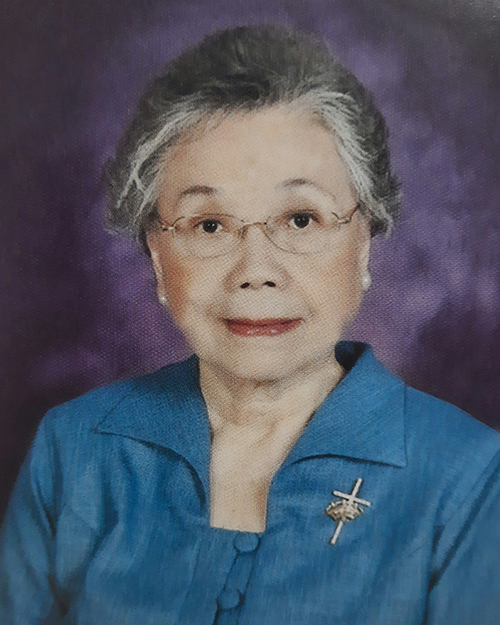
Dr. Tiu Uy Pei Suan
In 1990, Dr. Tiu Uy Pei Suan succeeded Mr. Ong To Sieng as principal when the latter retired. Named assistant principals were Mrs. Joy Dy and Mrs. Judy Tan.
New Constructions and Welfare Structures
The time-worn elementary school buildings were replaced by two new buildings, which were constructed in 1991 and 1994 respectively. These were the five-storey structure topped by the multi-purpose Stephenian Hall; and the pre-school building topped on the fourth and fifth levels by the indoor gymnasium. These projects were the result of generous outpouring of financial support by alumni, Parish members and friends. In fact, the pre-school building project came about as a result of the continuous fund campaign that was started five years earlier (1990). A musical production entitled “Once Upon A Time” was staged as a fund-raiser at the Philippine International Convention Center in celebration of the school’s 75th year in 1992.
|
Gymnasium |
The completed projects provided more rooms for additional facilities that further enhanced a well-rounded St. Stephen’s education for the pupils. In 1993, the school became one of the founders of the 121-member Association of Chinese-Filipino schools in the Philippines and for one year, it housed the offices for the organization.
In December 1995, a landmark decision was reached that gave birth to the St. Stephen’s High School Faculty and Staff Welfare Fund Foundation. The foundation was registered with the Securities and Exchange Commission (SEC). Again, the generosity of the alumni and friends of the school was tested and a successful fund drive yielded an initial Php 30 million realized target. On the occasion of the school’s 80th anniversary, a concert entitled “The Sound of Stephenians” was held at the Cultural Center of the Philippines in November 1997. More donations were received. Thus, the school was finally able to begin extending medical benefits to the beneficiaries – the teachers and staff.
In 1998, Dr. Tiu Uy Pei Suan retired and Mrs. Joy Dy was named principal with Mrs. Judy Tan as assistant principal. Accredited Status Reconfirmed.
The upgrading of the school’s facilities continued. A speech laboratory was set up and made possible by the School Board in 1999. The Jimmy Go swimming pool and facilities were constructed in 2001 and became a welcome part of the campus landscape. The Auditorium at St. Stephen’s High School underwent major redesigning and renovation and was finally inaugurated in a festive program in November 2006. In the Summer of 2010, a multi-purpose hall in the high school building was put up in the former Science Lab area to better serve the students during lunch break.
Students continued to be provided a healthy environment for learning, complemented by a lot of sports, arts and Christian activities for their balanced development. In 2005, a re-survey of the pre-school, elementary and high school departments was conducted by the FAAP-ASCC-AAI. As a result, the school was able to maintain its Accredited Status in all levels as were the outcome of the 2000 and 1995 re-surveys. In November 2010, St. Stephen’s High School was proudly awarded a 5-year Level III Accreditation Status, the highest level accorded to an institution.
In May 2007, Mrs. Joy Dy completed her term as principal. Mrs. Judy Tan was appointed Officer-in-Charge. Dr. Tiu Uy Pei Suan, was requested by the Board of Trustees to come out of retirement to represent it in the school administration. She was named School Director.
In 2008, Mrs. Judy Tan was appointed as Principal by the Board of Trustees. Currently, she is still our School Principal. In March 2012, the Elementary Building’s much awaited new elevator system was inaugurated by the Alumni Association.
In July 2012, on the occasion of the school’s 95th Anniversary, ribbon-cutting ceremonies signaled the completion of major renovation projects undertaken within the year. Inaugurated were the three newly modernized Science Research, Biology and Physics laboratories; likewise, the recently renovated Central Office, Office of Student Affairs, School Clinic and Conference Room.
Now celebrating 96 fruitful stories, St. Stephen’s High School story is a testament to the faithfulness of God. The school’s history is also a tribute to the original founders who had the vision to provide good education and teach about God’s love to students. The long lists of educators, leaders from the School Board, the Alumni and St. Stephen’s Parish, as well as workers throughout the 90 years have seen to it that the founders’ noble intention and worthy goals have not been forgotten. The same vision shall continue to inspire each new generation of the St. Stephen’s community in the years to come.
Mission and Vision
St. Stephen’s High School whose mission is to give the youth a high level of education based on Christian principles, offers preschool, elementary and secondary education programs as prescribed by the Department of Education. It is a Chinese-Filipino school enriched by the offering of Chinese Curriculum in addition to the English Curriculum.
The Stephenian education aims to develop the multiple intelligences of the students, helping them to become well-rounded, productive Christian citizens who are lifelong learners. We want to see our students to resemble Jesus as depicted in Luke 2:52 ; “And Jesus advanced in wisdom and stature, and in favor with God and men.”
St. Stephen’s High School has provided the learners many opportunities to develop their individual talents and to draw out their potentials to lead a more meaningful life. Completing the picture of an ideal graduate: God-fearing, equipped with life skills, lifelong learner, globally competent, communicates well in Chinese, English and Filipino, appreciates and supports his/her Alma Mater, future godly parent and a productive citizen of our country.
With the constant guidance and blessings of the Almighty God, the forerunners of the School, the alumni, the parents and the students have worked together making St. Stephen’s High School after God’s own heart. As a church related institution, St. Stephen’s High School maintains the mission for which it was established by its missionary founders which is to provide quality education based on Christian principles.
Purposes and Objectives of the Institution
General Objectives
The general objectives of the school include four aspects:


Religious training for the Christian way of life


Vocational training in preparation for gainful employment


Academic training in preparation for college work for future career


Citizenship training for law-abiding and responsible training
Specific Objectives of the Preschool Department


To impart knowledge and love of God


To develop desirable attitudes and pleasant personality


To enhance physical, emotional and mental health


To provide experiences that will help form good habits


To foster desirable relationships among small children


To build strong foundation for basic knowledge and skills


To provide activities that will help discover creative and artistic abilities of children
Specific Objectives of the Elementary School
The general objectives of the school include four aspects:


To instill in the minds of children love and service to God, people and country


To help children understand the concept of interrelationship between themselves and the environment in order to cope with the changing society and community within their capabilities


To help the children develop well-rounded personalities through character building and strengthening of their social consciousness, spiritual and moral values.


To prepare the children academically for them to have reasonable proficiency in science, mathematics, and communication arts for the next grade level and finally to tackle the requirements of secondary education.
Specific Objectives of the High School


Understand themselves in relation to God, preserve and advance the Christian tradition of relating harmoniously and effectively with family, school and community


Develop a reasoned commitment to the goals of national development by cherishing, and developing moral and spiritual values and other aspects of the national heritage desirable in the Philippine society


Understand the wide possibilities of the arts and the sciences as permanent sources of pleasure and profit, and discover, broaden, and heighten his abilities in the appreciation for them.


Acquire the basic occupational skills, knowledge and information essential for obtaining initial gainful employment and for making intelligent choice of occupation or career.


Acquire further skills in thinking, speaking, and writing, and develop the ability to react intelligently and creatively to mass media and other life situations.


Obtain experience and form desirable attitudes for understanding himself, his own people, and other races, places and times through opportunities for living vicariously with a wide variety of people, thereby promoting a keen sense of self and family and of national and international communities.


Demonstrate understanding, acquisition, and application for the basic concepts and methodologies of the different branches of human knowledge in order to promote his physical, intellectual, emotional and social well-being.
Accreditations
St. Stephen’s High School is awarded Level III (Highest Level) Accreditation Status as certified by the FAAP (Federation of Accrediting Agencies of the Philippines) through the ACSCU-AAI.


